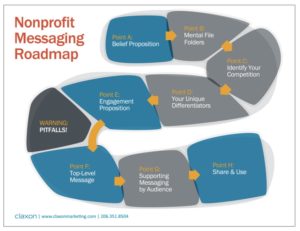Being consistently compelling is key when it comes to creating a lasting connection with your supporters. It’s what makes good brands great. It helps you stand out from the crowd and keep you at the forefront of people’s minds. It’s also really hard—especially when you have so many audiences and channels to juggle!
That’s why we wanted to interview Marsha Savery, Director of Marketing for the Seattle Aquarium. Whether it’s a billboard on the side of the road or an octopus in a glass tank, the Seattle Aquarium is consistently compelling no matter the setting. We were lucky enough to get Marsha’s tips on how they work their magic.

- Be able to clearly describe your brand: Marsha describes the Seattle Aquarium’s brand as clean, consistent, family friendly and professional. The graphics are very strong and vary according to the Aquariums’ three main audiences: families in the tri-county region with children under twelve, volunteers and donors.
- Have a common thread: The Director has the final say on visuals, which for families are tailored to be fun, vibrant artwork. Graphics for volunteers are photographs of the ocean and fish, and those geared towards donors are photos of the ocean, children and marine wildlife. The thread that keeps the visuals consistent is the Aquarium’s message of preserving marine wildlife, which is embedded in all they do.
- Have one conductor: Many people create content throughout the organization, but when it comes down to it, Marsha manages to make sure it all works in concert—social media, web content, billboard graphics, etc. The message never gets diluted because she keeps all the pieces working together. Even advertising done by an outside agency, as for the Aquarium’s summer outdoor ads, is managed solely by her.
“I think non-profits should find someone they trust who can give them advice on how to present themselves in a polished manner. It’s so important to look like you’ve got your act together so somebody may help fund you. And graphics can do that.”
